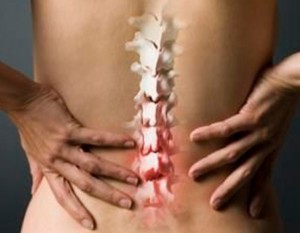Currently, a large number of people suffer from osteochondrosis. Many of them do not even know the existing problem. Meanwhile, if you don't start treatment on time, complications will occur that will be felt for the rest of your life. Osteochondrosis, like many other diseases, is "rejuvenating" and significantly worsens the quality of life, leaving it out of its usual rhythm.
In our article we will learn a little about the disease itself, in addition to delving into the medical method of its treatment.
Osteochondrosis and its types
Osteochondrosis is a deformation of the articular cartilage, the bone tissue of the spine and the intervertebral discs.
Osteochondrosis occurs:

- lumbar (lumbosacral),
- cervical,
- chest.
Causes of osteochondrosis:
- walking upright,
- curvature of the column,
- spinal injury
- flat feet,
- Frequent lifting
- frequent changes in torso position,
- prolonged stay in uncomfortable positions,
- spinal overload,
- physical inactivity and obesity,
- malnutrition,
- stressful conditions.
Stages of development of osteochondrosis
- Due to certain changes in the intervertebral disc, instability of the vertebrae appears. The spine is very prone to injury.
- The beginning of the destruction of the fibrous ring of the intervertebral disc occurs. The intervertebral gap decreases.
- The annulus fibrosus ruptures. The nucleus pulposus of the intervertebral disc protrudes. Due to the formation of an intervertebral hernia, a deformity of the spine is caused.
- A pronounced pain syndrome occurs. Due to the formation of bony growths and ossification of the spinal ligaments, movements become limited.
Symptoms of osteochondrosis
Lumbar region (lumbosacral)
- Constant back pain.
- Sensation of pain and numbness in the extremities.
- Decrease in physical activity.
- Increased pain when making sudden movements, lifting weights, exercising, sneezing and coughing.
Cervical region
- Pain in arms and shoulders, headaches.
- Vertebral artery syndrome (burning and stabbing headache, dizziness, noise in the head, colored spots and "flies" before the eyes).
Thoracic region
- Pain in the internal organs, particularly in the chest ("stake" in the chest) and the heart area.
Determination of diagnosis
Diagnosis is made in an appointment with a neurologist based on the patient's complaints (pain syndrome, mobility limitation, etc. ). He examines the spine in the standing, sitting, and lying position (at rest and in motion). When examining the back, attention is paid to posture, structural features of the torso, the lower angles of the shoulder blades, the lateral contours of the neck and waist, the position of the shoulder girdle, etc. After that, the doctor, as a rule, directs the patient to X-rays, CT or MRI, with the help of which the diagnosis is clarified and concrete, the degree of damage is determined and hidden deviations ofthe rule. Based on the data obtained, the neurologist prescribes the appropriate treatment. As a rule, this is a complex therapy, which includes the use of drugs, massage, exercise therapy and other methods.
Therapeutic exercises for osteochondrosis of the lumbar spine

Treatment of osteochondrosis with drugs
To begin with, it should be noted that at the initial stage of the development of osteochondrosis, in certain cases, you can do without drugs. It will be enough to use corrective gymnastics, all kinds of applicators, as well as reduce loads and eliminate other causes of the disease. If the symptoms are gaining strength and studies have shown characteristic changes, drugs that help influence both the cause and symptoms of osteochondrosis should be used.
Treatment of osteochondrosis with drugs is indicated during the period of its exacerbation and is aimed at relieving the inflammatory process, relieving pain and improving metabolic processes due to internal intake or administration of drugs by injections.
Because osteochondrosis is a systemic disease that negatively affects various organs and systems, its treatment must be comprehensive. Medications for the treatment of osteochondrosis perform the following tasks:
- pain relief,
- elimination of inflammation
- improve blood circulation in affected tissues,
- cartilage restoration,
- restore joint mobility
- elimination of depression caused by constant pain.
So what medications can a neurologist prescribe to treat osteochondrosis?
- NSAIDs (non-steroidal anti-inflammatory drugs).
Eliminates inflammation and pain. They are applied externally (gel, cream), internally (capsules, tablets), as well as in the form of injections (intramuscular, intravenous, subcutaneous).
- Vasodilators (vasodilators).
As a result of muscle tension and pain in osteochondrosis, narrowing of the blood vessels occurs. To avoid undesirable consequences against the background of this, the doctor may prescribe vasodilator drugs for a better restorative effect.
- Muscle relaxants (muscle relaxants).
Muscle relaxants have a relaxing and calming effect on muscles. The healing process without drugs of this group progresses more slowly, since its properties normalize blood circulation, pain sensations are attenuated, mobility is restored and the affected tissues recover more quickly.
- Chondroprotectors.
Chondroprotectors do not give more destruction, they stabilize the condition. Taking chondroprotectors is long-term, for life, the effect occurs after treatment for a period of at least 6 months. Chondroprotectors are used externally, internally and in the form of injections.
- glucosamine
- chondroitin
- glucosamine + chondroitin
- glucosamine + chondroitin + vitamins
- Sedatives (sedatives).
Long-term pain syndrome can trigger stress and depression. In this case, valerian, motherwort, combined herbal preparations are prescribed. For more serious disorders, antidepressants and sleeping pills are used to improve the process of falling asleep and the quality of sleep.
- Vitamins and complexes of vitamins and minerals.
B vitamins are of great importance here, as they can restore the sensitivity of the affected nerve fibers and reduce pain.
In order to strengthen the body in general, vitamin-mineral complexes can also be prescribed.

























